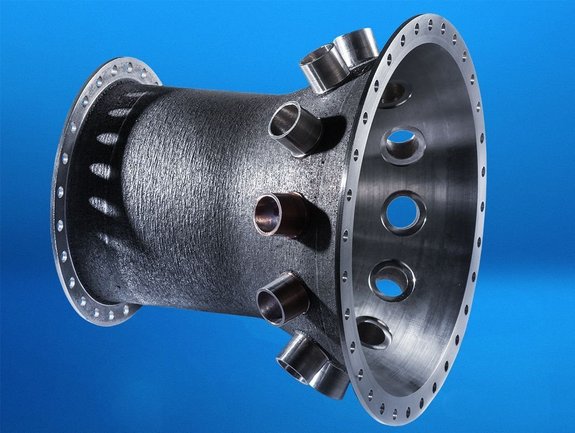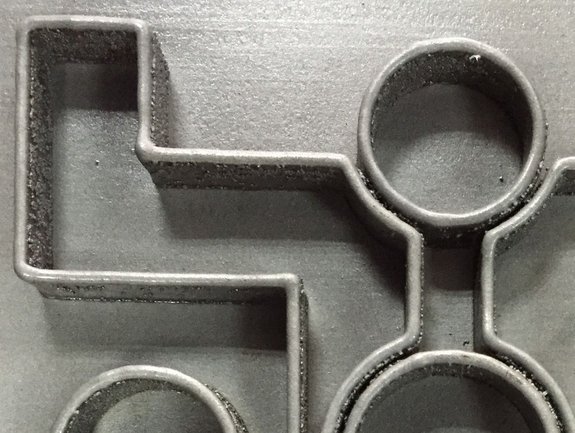Laser Additive Manufacturing
Calm process control – homogeneous, pore-free, and crack-free layers of material: additive manufacturing with top-notch effectiveness.
To the examplesCalm process control – homogeneous, pore-free, and crack-free layers of material: additive manufacturing with top-notch effectiveness.
To the examplesThe main tool involved in metal additive manufacturing is a system which contains a laser, a movable metal deposition head and a metal powder nozzle or wire feeder. The metal deposition head, which is suitable for 3D printing, is moved over a building platform while it adds the metal powder or the wire by heating it with the laser beam and melting it on the surface. After the material has been cooled down, the next metal layer can be applied, thereby additively generating a three-dimensional component in accordance with the construction plan. The technical principle of the additive manufacturing process is basically the same as the cladding process. The difference is that it does not revolve around two-dimensional layers: instead, three-dimensional forms are created.
The top-hat beam profile of Laserline’s diode lasers creates very even molten pools and allows calm process control that leads to homogeneous, crack-free layers of material. One of the most promising approaches for optimized production processes is the integration of laser beam sources into machine tools for additive manufacturing products.
A variety of technologies exist to generate components, often referred to as additive manufacturing (AM) or 3D printing. Laser cladding, also known as laser metal deposition (LMD) is gaining importance in this context. It enables shapes and structures to be built up in a single production step - with virtually no material loss, reworking or tool wear (near-net-shape manufacturing). Step by step, layers of identical materials are deposited. With appropriate programming of the processing system, even complex components can be produced. In addition to stainless steels, aluminum, titanium and superalloys are increasingly used here, for example in turbines, fuselages and wings in aircraft construction.
Additive manufacturing is a comparably new production method, involving a component being constructed via layer-by-layer material coating. Originally developed for prototyping, today it is mainly used for the production of geometrically complex components in small batch sizes from 1 to 1,000. Here, additive manufacturing is more economical than conventional methods, for the most part.
One of the most promising approaches for optimized production processes is the integration of laser beam sources into machine tools. For example, Laserline’s LDM diode lasers are implemented into a five-axis milling machine, where they make it possible to switch from additive to subtractive processing: the laser creates the powder coating while the milling head handles the machining.
The integrated diode laser applies the powder extensively, thus creating the basic structure of the component. The downstream milling head post-processes the generated part by only chipping away at the necessary areas. The flexible switch between laser and milling processing enables component segments to be processed that would be out of reach within the finished part. This means that design and production concepts with undercuts or the production of overhanging contours without support structures are no longer a problem. Plus, it fundamentally opens up new applications and geometry opportunities.


The various potential applications for Laserline’s diode lasers in additive manufacturing also offer other options that go far beyond the interplay between additive powder coating and subtractive machining. For example, lasers can be integrated into a twelve-axis milling machine and be used for welding and hardening, besides powder cladding. Alongside the laser and powder nozzle, corresponding optics is implemented for this purpose, with it possible to switch back and forth between them depending on the processing operation. As a result, complex production processes based on a single beam source can be achieved, thanks to laser additive manufacturing.
Which laser systems are particularly suitable for additive manufacturing? You can find a selection here.